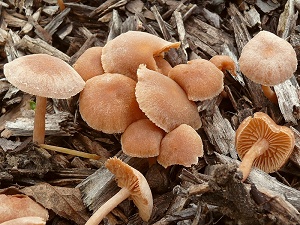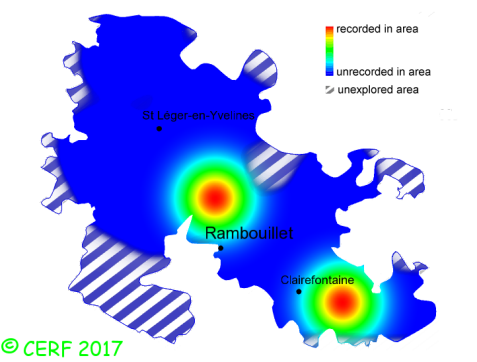| Tubaria hiemalis Bon |
|
|
|
|
|
|
The cap is hygrophanous, reddish-brown to pale ochre (when dry), convex-hemispherical then expanded; its margin is striate. The cap surface is furfuraceous, dry. The stem is concolorous to cap or paler. The flesh is reddish brown, unchanging; its taste is pleasant, weak; the odour is faint; its texture is fibrous. The gills are pallid ochre to cinnamon with a paler edge, then red-brown, adnate, rather distant . The spore print is ochre-brown. This species is saprophytic. It grows on wood (also on the ground, on buried woodchips or wood debris), in woods, gardens or parks, on soil rich in various plant debris. The fruiting period takes place from January to June.
Chemical tests : none. Distinctive features : Red-brown cap and stem, hygrophanous, with a striate margin; on wood debris; in winter Tubaria hiemalis is rare and localised in the forest of Rambouillet, and is frequent, more generally speaking . | ||
|
page updated on 14/01/18

